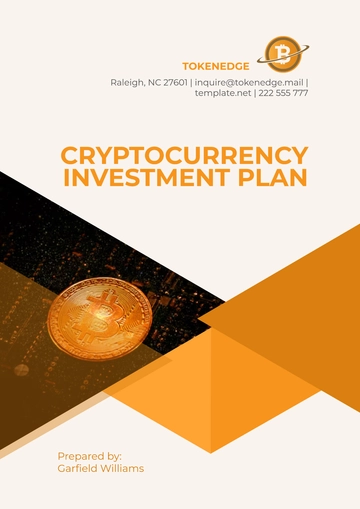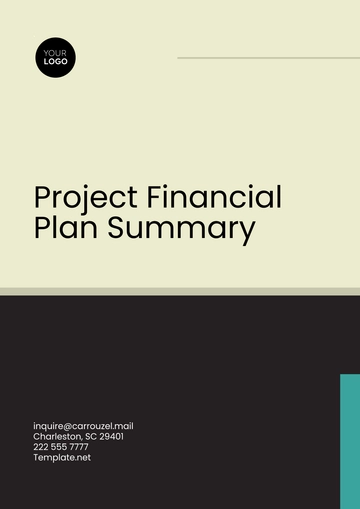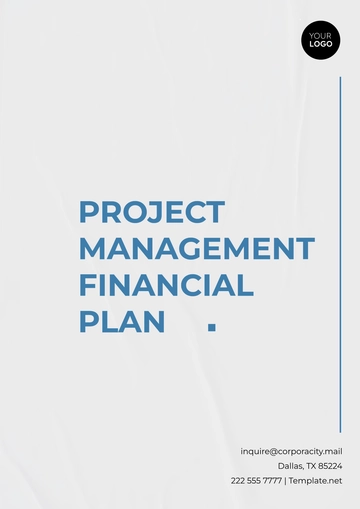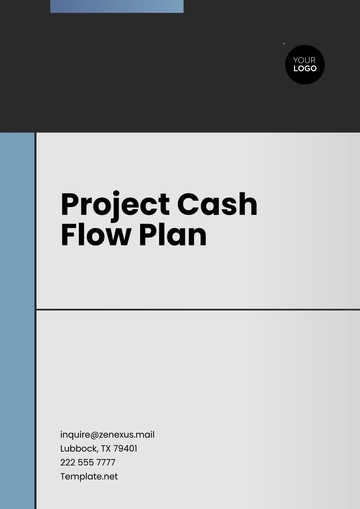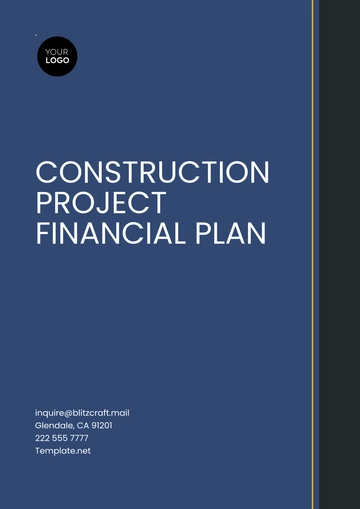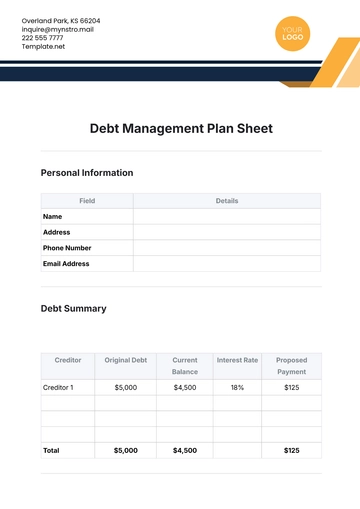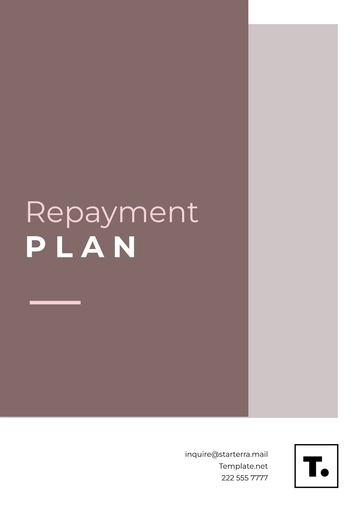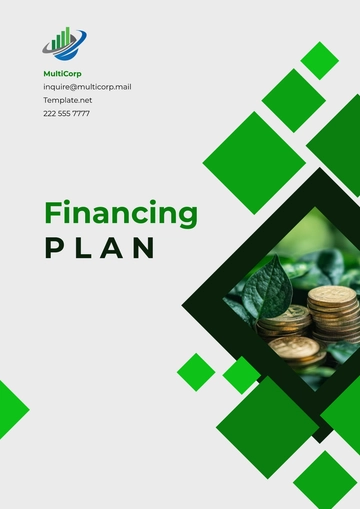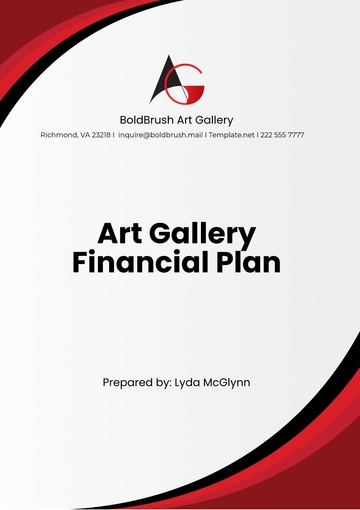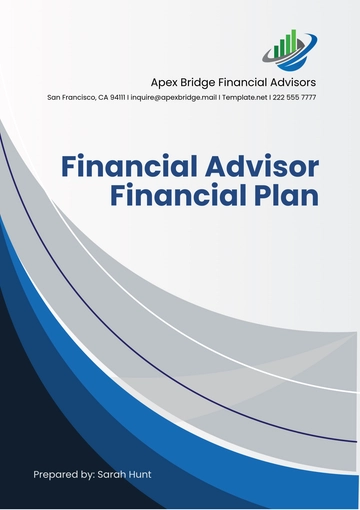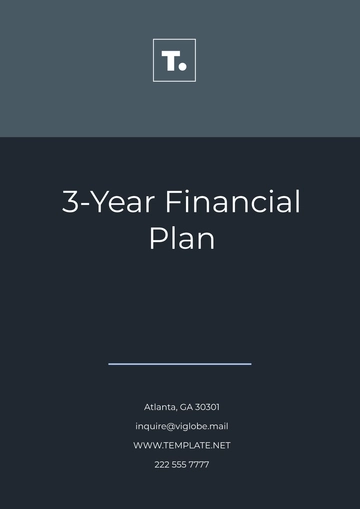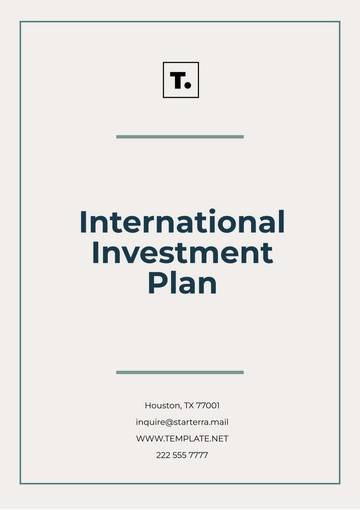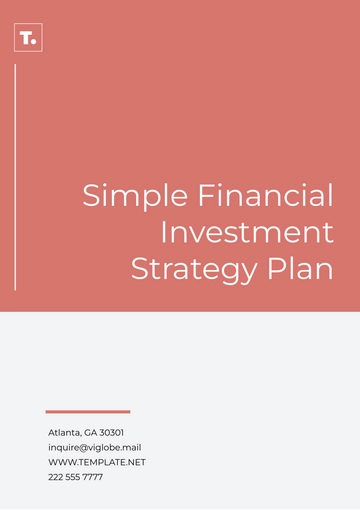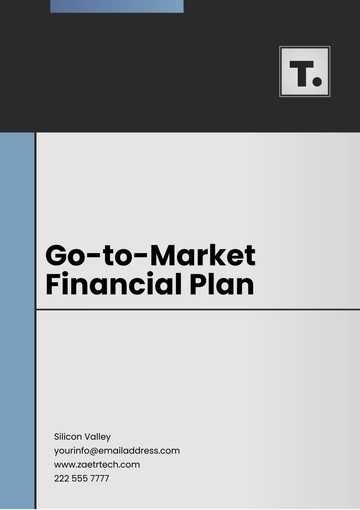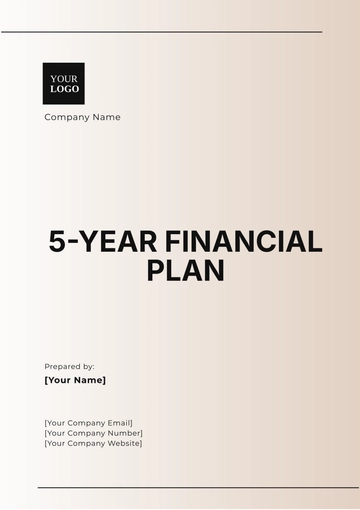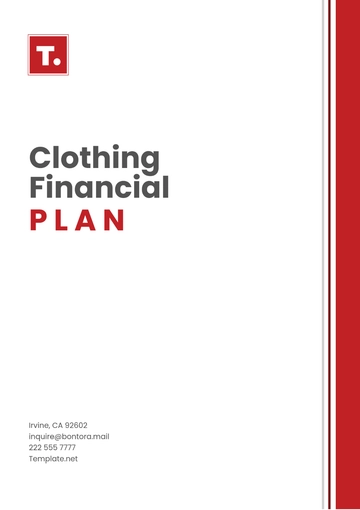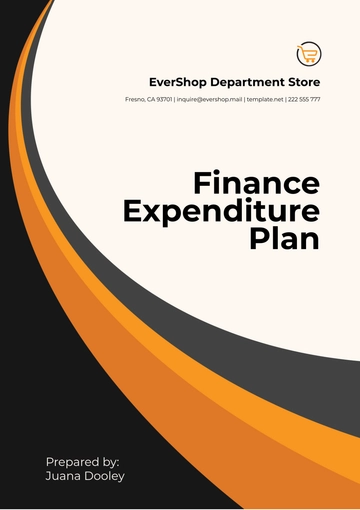Free Car Rental Financial Plan
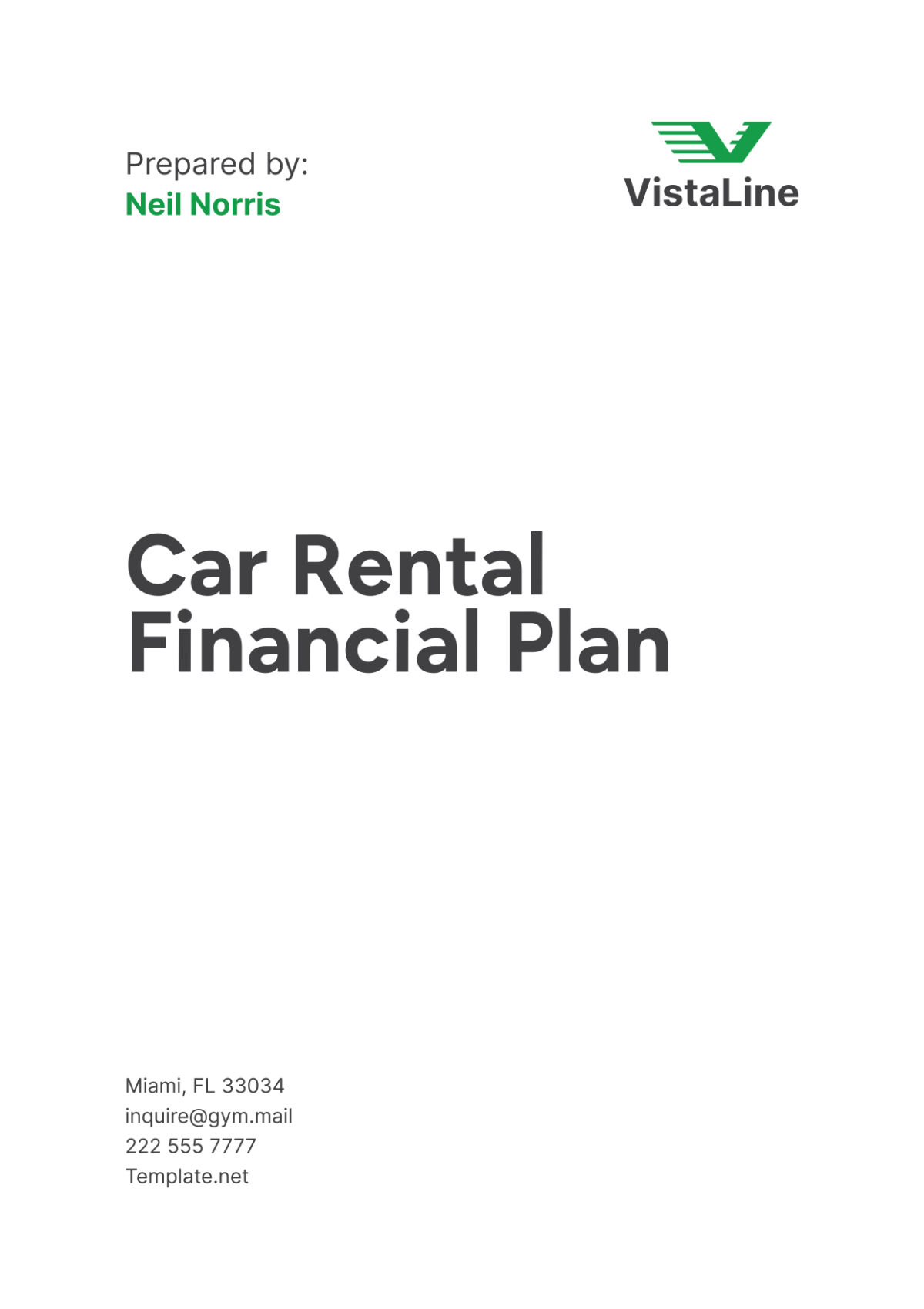
I. Executive Summary
A. Overview
[Your Company Name] aims to establish itself as a leading provider of car rental services in [Your Company Address], focusing on delivering exceptional customer experiences and maintaining a diverse fleet of vehicles. This financial plan outlines our strategic objectives, operational strategies, and financial projections for the next three years, highlighting our commitment to profitability, growth, and market leadership.
B. Objectives
Fleet Expansion: Our primary goal is to expand our fleet size to 100 vehicles within the first year of operations, enabling us to cater to increasing customer demand and seasonal fluctuations.
Revenue Targets: By the end of the second year, we aim to achieve monthly revenues of $200,000, driven by effective marketing campaigns, strategic pricing, and optimized operational efficiencies.
Utilization Efficiency: Maintaining a high fleet utilization rate of 80% ensures optimal resource allocation and revenue generation, contributing to our financial sustainability.
Customer Satisfaction: We strive to attain and sustain a customer satisfaction rate of 95% or higher, emphasizing personalized service, transparent pricing, and responsive support.
C. Mission Statement
At [Your Company Name], our mission is to redefine the car rental experience by offering reliable, convenient, and affordable transportation solutions tailored to meet the diverse needs of our customers. We are dedicated to setting industry benchmarks for service excellence, operational reliability, and customer satisfaction in [Your Company Address].
II. Company Description
A. Business Overview
[Your Company Name] enters the competitive car rental market in [Location] with a comprehensive portfolio of vehicles, ranging from economy models to luxury SUVs. Our centralized location at [Your Company Address] strategically positions us near major transportation hubs, including airports, hotels, and tourist attractions, enhancing accessibility and customer convenience. Our facilities include a modern office space equipped with advanced booking systems, a dedicated customer service area, and an on-site maintenance garage staffed with certified technicians.
B. Legal Structure
[Your Company Name] operates as a Limited Liability Company (LLC), offering our founders and stakeholders limited liability protection while enabling flexible management and operational structures. This legal framework supports our business growth ambitions and mitigates personal financial risks associated with business operations and liabilities.
C. Location and Facilities
Our flagship location at [Your Company Address] features ample parking for up to 150 vehicles, ensuring secure storage and easy access for customers. The facility includes a customer lounge area where clients can comfortably wait during vehicle pickups and drop-offs. Our maintenance garage adheres to industry-leading standards, conducting regular inspections and repairs to maintain fleet reliability and safety standards, thereby minimizing downtime and ensuring maximum operational efficiency.
III. Market Analysis
A. Industry Overview
The global car rental industry continues to expand, fueled by increasing travel volumes, urbanization trends, and shifting consumer preferences towards flexible transportation solutions. In the United States, the market surpassed $64.3 billion in 2050, with projected growth driven by rising disposable incomes, expanding tourism sectors, and corporate travel demands. This growth trajectory presents lucrative opportunities for [Your Company Name] to capitalize on emerging market trends and consumer preferences in [Location].
B. Target Market
Tourists: Visitors seeking convenient and reliable transportation options during vacations, business trips, and exploratory tours in [Location].
Business Travelers: Professionals requiring efficient and professional transportation solutions for corporate events, meetings, and extended stays.
Local Residents: Individuals and families seeking temporary vehicle rentals for personal use, including weekend getaways, special occasions, and short-term transportation needs.
C. Competitive Analysis
The car rental market in [Location] is characterized by fierce competition from established players such as Hertz, Enterprise, and Avis, each known for their extensive vehicle fleets, competitive pricing strategies, and loyalty programs. Despite the competitive landscape, [Your Company Name] distinguishes itself through personalized customer service, a diverse vehicle selection catering to various budgets and preferences, and a commitment to transparent pricing and flexible rental terms.
D. SWOT Analysis
Strengths:
Diverse Fleet: Offering a broad range of vehicles, from economical compact cars to spacious SUVs and luxury models, ensuring options to suit diverse customer needs.
Strategic Location: Centrally located near [Location's] major airports, hotels, and tourist attractions, facilitating convenient access and enhancing customer convenience.
Customer Service Excellence: Dedicated to delivering exceptional service experiences through personalized interactions, quick response times, and proactive support.
Weaknesses:
Market Newcomer: As a new entrant, building brand awareness and gaining customer trust may initially present challenges, requiring targeted marketing efforts and strategic partnerships to establish a strong market presence.
Initial Capital Investment: Significant upfront investments in vehicle acquisitions, facility setup, and marketing initiatives may strain initial financial resources and cash flow.
Opportunities:
Growing Tourism Sector: Expanding tourist arrivals and cultural events in [Location] present opportunities to capture a larger customer base and increase market penetration.
Technological Advancements: Leveraging advanced booking systems, mobile applications, and digital marketing platforms to enhance customer engagement, streamline operations, and gain competitive advantage in the market.
Threats:
Economic Instability: Fluctuations in economic conditions, including recessions or downturns, may impact consumer spending on travel and discretionary services, affecting demand for car rental services.
Intense Competition: Aggressive pricing strategies, promotional activities, and market saturation from established competitors could exert pressure on pricing margins and market share, necessitating strategic differentiation and value-added services.
IV. Marketing Strategy
A. Marketing Objectives
Brand Awareness: Increase brand recognition by 50% within the first year through targeted marketing campaigns, social media promotions, and local advertising initiatives.
Customer Acquisition: Achieve a competitive customer acquisition cost (CAC) of $30 through cost-effective digital marketing channels, referral programs, and strategic partnerships with travel agencies and corporate clients.
Market Penetration: Capture a 10% market share within two years by expanding our service offerings, enhancing customer loyalty programs, and diversifying promotional incentives to attract repeat business and referrals.
B. Marketing Mix (4 Ps)
Product: Offer a diverse selection of well-maintained vehicles equipped with advanced safety features, entertainment systems, and GPS navigation, ensuring comfort, convenience, and reliability for all customer segments.
Price: Implement a dynamic pricing strategy based on seasonal demand, competitive analysis, and customer preferences, providing transparent pricing structures and attractive rental packages tailored to varying budgetary constraints.
Place: Establish a visible presence near [Location's] key travel hubs, including airports, downtown areas, and major hotels, facilitating seamless vehicle pickups, drop-offs, and customer interactions. Enhance accessibility through a user-friendly online booking platform and responsive customer service channels.
Promotion: Launch targeted digital marketing campaigns across multiple channels, including search engine optimization (SEO), pay-per-click (PPC) advertising, and social media platforms. Collaborate with local businesses, event organizers, and tourism boards to promote exclusive discounts, promotional offers, and package deals aimed at attracting both local and international clientele.
C. Sales Strategy
Direct Sales Channels: Facilitate easy booking processes through our website, mobile application, and dedicated customer service hotline, offering real-time availability, competitive pricing comparisons, and secure payment options.
Online Distribution Platforms: Partner with leading travel aggregators, online travel agencies (OTAs), and booking portals to expand our market reach, optimize inventory management, and leverage cross-selling opportunities for supplementary services such as insurance coverage and GPS rentals.
V. Operations Plan
A. Operational Strategy
Fleet Management: Procure a balanced mix of new and pre-owned vehicles, emphasizing fuel efficiency, safety ratings, and customer preferences across various vehicle categories. Implement rigorous maintenance schedules and quality assurance protocols to uphold vehicle reliability, minimize downtime, and enhance customer satisfaction levels.
Staffing and Training: Recruit skilled professionals with expertise in customer service, vehicle maintenance, and administrative operations. Provide comprehensive training programs to equip our team with industry-specific knowledge, technical competencies, and customer-centric service skills, fostering a culture of excellence, teamwork, and continuous improvement.
Technological Integration: Deploy advanced fleet management systems (FMS) to monitor vehicle utilization rates, optimize route planning, and facilitate proactive maintenance scheduling. Integrate customer relationship management (CRM) software to personalize service interactions, capture customer preferences, and nurture long-term relationships through targeted marketing campaigns and loyalty rewards programs.
B. Milestones
Pre-launch Phase: Secure initial funding through equity investments, bank loans, and venture capital partnerships to support startup costs, including vehicle acquisitions, facility setup, and marketing initiatives.
First Year Objectives: Launch comprehensive marketing campaigns to build brand awareness, attract early adopters, and achieve the milestone of serving the first 1,000 customers by [Date]. Expand our fleet inventory to 50 vehicles to meet escalating demand and optimize operational efficiencies.
Second Year Initiatives: Scale operations by increasing our fleet size to 100 vehicles, diversifying service offerings, and exploring opportunities for expanding into adjacent markets or establishing satellite rental locations in high-demand areas.
VI. Financial Plan
A. Startup Costs
Item | Cost ($) |
|---|---|
Office Setup | 50,000 |
Vehicle Purchase | 2,000,000 |
Marketing and Promotion | 100,000 |
Licensing and Permits | 20,000 |
Miscellaneous | 30,000 |
Total | 2,200,000 |
B. Revenue Projections
Year | Fleet Size | Utilization Rate | Monthly Revenue ($) | Annual Revenue ($) |
|---|---|---|---|---|
1 | 50 | 70% | 140,000 | 1,680,000 |
2 | 100 | 80% | 200,000 | 2,400,000 |
3 | 150 | 85% | 255,000 | 3,060,000 |
C. Expense Projections
Year | Fixed Costs ($) | Variable Costs ($) | Total Expenses ($) |
|---|---|---|---|
1 | 500,000 | 900,000 | 1,400,000 |
2 | 600,000 | 1,000,000 | 1,600,000 |
3 | 700,000 | 1,200,000 | 1,900,000 |
D. Profit and Loss Statement
Year | Revenue ($) | Total Expenses ($) | Net Profit ($) |
|---|---|---|---|
1 | 1,680,000 | 1,400,000 | 280,000 |
2 | 2,400,000 | 1,600,000 | 800,000 |
3 | 3,060,000 | 1,900,000 | 1,160,000 |
E. Cash Flow Statement
Year | Cash Inflows ($) | Cash Outflows ($) | Net Cash Flow ($) |
|---|---|---|---|
1 | 1,680,000 | 1,400,000 | 280,000 |
2 | 2,400,000 | 1,600,000 | 800,000 |
3 | 3,060,000 | 1,900,000 | 1,160,000 |
F. Break-even Analysis
[Your Company Name] anticipates reaching the break-even point within the first year of operations, with projected monthly revenues of $140,000 based on a 70% fleet utilization rate and a fleet size of 50 vehicles. This milestone demonstrates our ability to cover operating expenses, service debt obligations, and achieve profitability while maintaining sustainable growth in subsequent years.
G. Funding Requirements
To finance our startup costs and initial operational expenditures, [Your Company Name] seeks total funding of $2,200,000. These funds will be sourced through a combination of equity investments from founding partners and secured loans from financial institutions, ensuring adequate capitalization to support our strategic initiatives and business expansion plans.
VII. Appendix
A. Assumptions
Average Rental Rate: $70 per day, determined through market analysis and competitive pricing assessments, adjusted seasonally and based on customer demand trends.
Average Rental Duration: Approximately 3 days, reflecting typical customer booking patterns and duration preferences across various vehicle categories.
Maintenance Costs: Estimated at $1,000 per vehicle annually, covering routine inspections, preventative maintenance, and repairs to ensure fleet reliability and minimize operational disruptions.
Marketing Budget: Allocated at 5% of annual revenue to support promotional activities, digital marketing campaigns, and customer acquisition strategies aimed at enhancing market penetration and brand visibility.
B. Risk Analysis
Economic Volatility: Potential fluctuations in economic conditions, including recessions or downturns, may impact consumer spending on travel and discretionary services, influencing demand for car rental services. Mitigation strategies include diversifying revenue streams, adjusting pricing strategies, and enhancing customer retention initiatives.
Competitive Landscape: Intense competition from established car rental companies with robust brand recognition, extensive fleets, and aggressive pricing strategies could pressure profit margins and market share. [Your Company Name] will differentiate itself through superior customer service, innovative service offerings, and strategic partnerships to attract and retain a loyal customer base.
Regulatory Compliance: Evolving regulatory requirements, licensing obligations, and environmental standards may necessitate additional costs and operational adjustments. [Your Company Name] will maintain proactive engagement with regulatory authorities, ensuring adherence to industry regulations, and mitigating compliance risks through ongoing training programs and operational audits.
C. Glossary
CAGR: Compound Annual Growth Rate, a metric used to determine the average annual growth rate of an investment over a specified period, illustrating [Your Company Name]'s projected revenue growth and financial performance.
CRM: Customer Relationship Management, a technology platform utilized to manage customer interactions, preferences, and service histories, enabling personalized marketing strategies and customer retention initiatives.
Utilization Rate: The percentage of time a vehicle is rented out compared to its total availability, reflecting [Your Company Name]'s operational efficiency, revenue generation potential, and fleet management effectiveness.
D. Contact Information
For additional information regarding our financial plan, investment opportunities, or strategic partnerships, please contact [Your Name] at [Your Email] or visit our official website at [Your Company Website]. Our team looks forward to discussing collaborative opportunities and exploring ways to enhance [Your Company Name]'s market presence and operational excellence in [Location].
- 100% Customizable, free editor
- Access 1 Million+ Templates, photo’s & graphics
- Download or share as a template
- Click and replace photos, graphics, text, backgrounds
- Resize, crop, AI write & more
- Access advanced editor
Plan for financial success with the Car Rental Financial Plan Template from Template.net. It's editable and customizable, tailored to optimize financial strategies. Use our Ai Editor Tool to forecast budgets and investments, ensuring sustainable growth and resilience in your car rental business.
You may also like
- Finance Plan
- Construction Plan
- Sales Plan
- Development Plan
- Career Plan
- Budget Plan
- HR Plan
- Education Plan
- Transition Plan
- Work Plan
- Training Plan
- Communication Plan
- Operation Plan
- Health And Safety Plan
- Strategy Plan
- Professional Development Plan
- Advertising Plan
- Risk Management Plan
- Restaurant Plan
- School Plan
- Nursing Home Patient Care Plan
- Nursing Care Plan
- Plan Event
- Startup Plan
- Social Media Plan
- Staffing Plan
- Annual Plan
- Content Plan
- Payment Plan
- Implementation Plan
- Hotel Plan
- Workout Plan
- Accounting Plan
- Campaign Plan
- Essay Plan
- 30 60 90 Day Plan
- Research Plan
- Recruitment Plan
- 90 Day Plan
- Quarterly Plan
- Emergency Plan
- 5 Year Plan
- Gym Plan
- Personal Plan
- IT and Software Plan
- Treatment Plan
- Real Estate Plan
- Law Firm Plan
- Healthcare Plan
- Improvement Plan
- Media Plan
- 5 Year Business Plan
- Learning Plan
- Marketing Campaign Plan
- Travel Agency Plan
- Cleaning Services Plan
- Interior Design Plan
- Performance Plan
- PR Plan
- Birth Plan
- Life Plan
- SEO Plan
- Disaster Recovery Plan
- Continuity Plan
- Launch Plan
- Legal Plan
- Behavior Plan
- Performance Improvement Plan
- Salon Plan
- Security Plan
- Security Management Plan
- Employee Development Plan
- Quality Plan
- Service Improvement Plan
- Growth Plan
- Incident Response Plan
- Basketball Plan
- Emergency Action Plan
- Product Launch Plan
- Spa Plan
- Employee Training Plan
- Data Analysis Plan
- Employee Action Plan
- Territory Plan
- Audit Plan
- Classroom Plan
- Activity Plan
- Parenting Plan
- Care Plan
- Project Execution Plan
- Exercise Plan
- Internship Plan
- Software Development Plan
- Continuous Improvement Plan
- Leave Plan
- 90 Day Sales Plan
- Advertising Agency Plan
- Employee Transition Plan
- Smart Action Plan
- Workplace Safety Plan
- Behavior Change Plan
- Contingency Plan
- Continuity of Operations Plan
- Health Plan
- Quality Control Plan
- Self Plan
- Sports Development Plan
- Change Management Plan
- Ecommerce Plan
- Personal Financial Plan
- Process Improvement Plan
- 30-60-90 Day Sales Plan
- Crisis Management Plan
- Engagement Plan
- Execution Plan
- Pandemic Plan
- Quality Assurance Plan
- Service Continuity Plan
- Agile Project Plan
- Fundraising Plan
- Job Transition Plan
- Asset Maintenance Plan
- Maintenance Plan
- Software Test Plan
- Staff Training and Development Plan
- 3 Year Plan
- Brand Activation Plan
- Release Plan
- Resource Plan
- Risk Mitigation Plan
- Teacher Plan
- 30 60 90 Day Plan for New Manager
- Food Safety Plan
- Food Truck Plan
- Hiring Plan
- Quality Management Plan
- Wellness Plan
- Behavior Intervention Plan
- Bonus Plan
- Investment Plan
- Maternity Leave Plan
- Pandemic Response Plan
- Succession Planning
- Coaching Plan
- Configuration Management Plan
- Remote Work Plan
- Self Care Plan
- Teaching Plan
- 100-Day Plan
- HACCP Plan
- Student Plan
- Sustainability Plan
- 30 60 90 Day Plan for Interview
- Access Plan
- Site Specific Safety Plan
